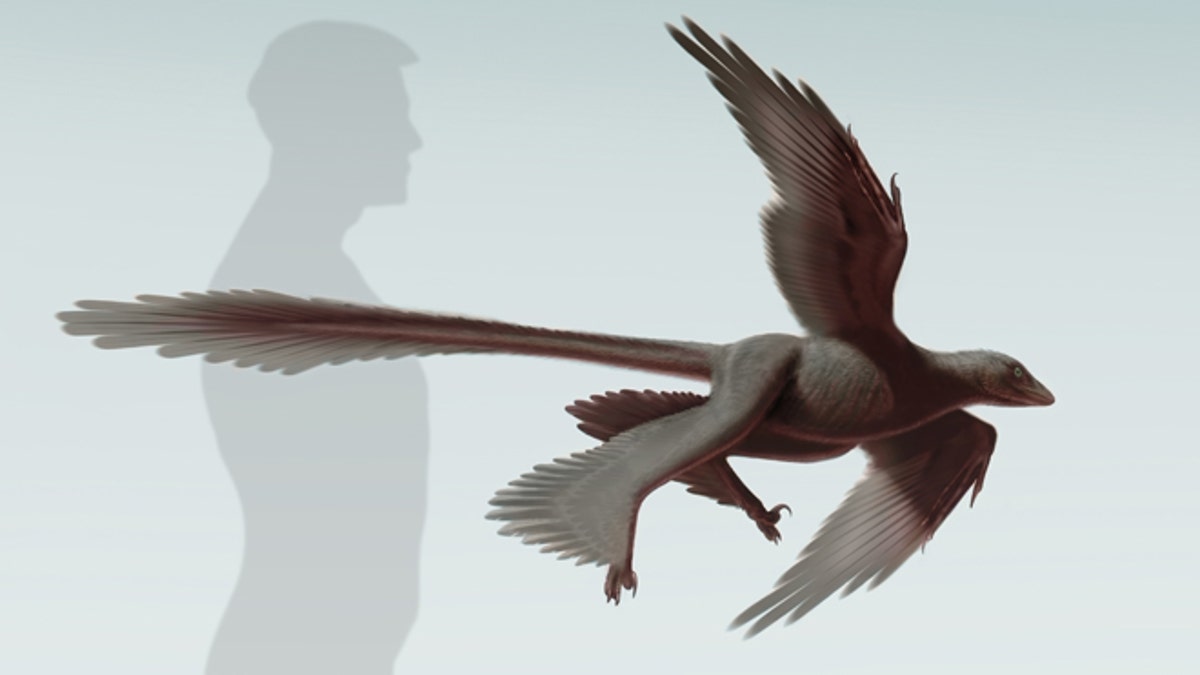
Illustration of Changyuraptor yangi, approximately 4 ft.long, compared to the human size. (S. Abramowicz, Dinosaur Institute, Courtesy of the Natural History Museum of Los Angeles County)
Ever since the release of the movie Jurassic Park, the Velociraptor has been in tough competition with the Tyrannosaurs rex for the most feared and dangerous dinosaur of all time. Its razor-sharp teeth, lighting speed and purported ruthless nature made it an ideal predator across the lands that dinosaurs roamed.
Now scientists have discovered fossils that indicate that some members of the raptor family may have terrorized the skies as well.
While working in the Chinese province of Liaoning near the border of North Korea in 2012, researchers from the Natural History Museum of Los Angeles found the fossilized remains of Changyuraptor yangi — a relative of the mighty Velociraptor that had the longest feathers of any known dinosaur, and not two, but four wings.
The light creature, just four feet long and nine pounds heavy, lived about 125 million years ago.
“I’ve never seen anything like it,” Luis Chiappe of the Natural History Museum of Los Angeles told The Washington Post. “It is a stunning specimen and it was stunning to see the size of the feathers. This is the dinosaur with the longest known feathers — by far. There is nothing like this by a very good distance. The feathers were one-fourth the size of the animal.”
While this airborne attacker may not have been the largest in the skies, this so-called “microraptorine” is one of the most important discoveries for scientists looking into the hypothesis of the origins of avian flight.
“Numerous features that we have long associated with birds in fact evolved in dinosaurs long before the first birds arrived on the scene,” said Dr. Alan Turner of Stony Brook University (New York), co-author of the study published in Nature Communications. “This includes things such as hollow bones, nesting behavior, feathers … and possibly flight.”
Raptors jaws may be the most infamous part of their bodies, but this one’s most important feature was its long, feathered tail. The Changyu – which means “long-feathered” in Chinese – used this tail much like today’s airplanes use flaps to slow down their flight and ensure a safe landing.
“The lengthy feathered tail of the new fossil provides insight into the flight performance of microraptorines and how they may have maintained aerial competency at larger body sizes,” the paper stated.
The region of China where the Changyuraptor yangi was discovered is known as a hotspot for well-preserved fossils. The study said that the province has helped cement “the notion that birds evolved from theropod dinosaurs” as numerous feathered, but non-avian, dinosaurs have been found there.
Follow us on twitter.com/foxnewslatino
Like us at facebook.com/foxnewslatino

